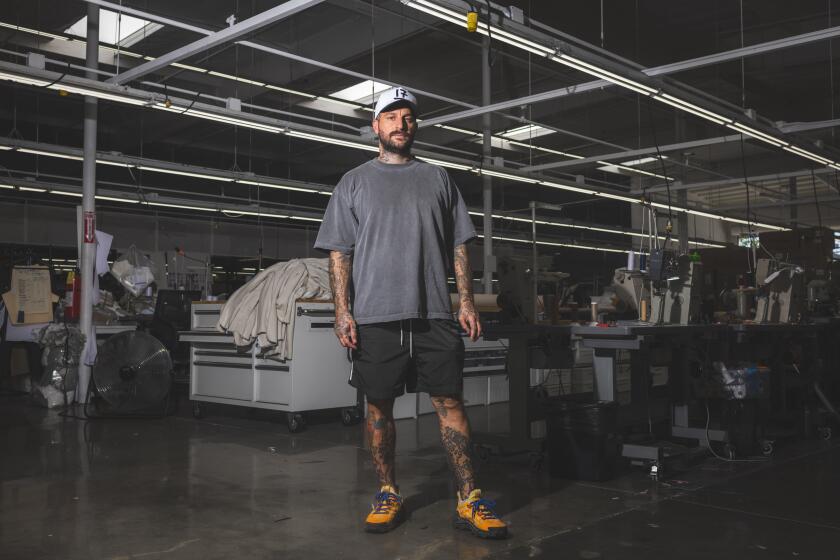U.S. firms look to sell wares in emerging markets
With debt-burdened American consumers cutting back in response to the recession, many U.S. companies are increasingly looking outward, toward fast-developing countries such as China, India and Brazil.
But instead of seeing these nations primarily as cheap producers of goods to sell to Americans, U.S. corporate leaders see them as potential customers for American products and services.
That shift, which has been underway for several years but has intensified sharply during the downturn, comes as vast numbers of families in these emerging economies are moving into cities and spending like never before to improve their living standards.
The trend could be a source of new jobs and investments in the United States, but it is unclear how large that benefit may turn out to be. Many American companies are investing in production and other facilities near the new customers instead of shipping goods from U.S. plants to the overseas markets.
The size of these potential markets dwarfs the domestic markets of most of the economically advanced nations. China, India and Brazil have a combined population of more than 2.6 billion people, many of them young and increasingly affluent, in contrast to the aging and far smaller populations of Western Europe, Japan and the United States.
The push overseas is taking place among small American manufacturing firms as well as giant multinational corporations. And it reflects what may be the beginning of a shift in the global economy, a rebalancing in which the world relies less on U.S. consumers and more on consumer spending in places such as China.
Almost no one doubts that Americans will reap some benefits. Stronger U.S. exports certainly will boost the domestic economy, as they have over the last decade.
Without their foreign customers, businesses such as Power Curbers Inc., a small construction-equipment maker in Salisbury, N.C., probably would have gone bankrupt in the recession.
“We’re fortunate that infrastructure development is going on in other countries,” says Dyke Messinger, Power Curbers’ president. He says 75% of his sales this year is international, compared with 25% two years ago.
Leaders of General Electric Co., believing that the U.S. and other advanced economies face a prolonged period of slow growth, say they are banking more than ever on emerging economies.
John G. Rice, GE’s vice chairman, insists that it’s not a zero-sum game.
He cites a locomotive assembly plant that the company just opened in Kazakhstan, in Central Asia. The trains’ diesel engines and related parts are made in Grove City and Erie, both in Pennsylvania, he says.
And consider GE’s low-cost, portable ultrasound machine that is targeted for rural China. Although the device is produced in a city near Shanghai, Rice says, engineers in Waukesha, Wis., among other places around the world, are benefiting from its growing sales in China and elsewhere.
Rice couldn’t put precise figures on jobs and profits that fed back to the U.S. from these projects, but says the launch of new products in budding markets overseas is clearly adding to employment at home, not taking it away.
Heading to markets
Yet over time, he says, more and more of the development and production of international goods will be transferred to local markets, such as with the locomotives in Kazakhstan, because of shipping costs and other factors. In fact, GE’s chairman, Jeffrey Immelt, argues that the shift in the balance of consumption power -- from wealthy countries to the emerging giants -- calls for a different business model for companies like his to succeed.
As populous nations such as China and India become a greater force in driving demand, the old way of developing products at home and distributing them worldwide won’t cut it, Immelt writes in the October issue of the Harvard Business Review.
Instead, he says, more of the products of the future need to be designed, built and marketed in those local markets, with decision-making power placed in local hands.
Immelt does not address the implications of this for American employment, but the trend line may be apparent from his own company’s annual reports: In 2004, GE had 165,000 employees in the U.S. and 142,000 elsewhere. By the end of last year the preponderance had been reversed: 152,000 in the U.S. and 171,000 outside.
Such statistics underlie the rising overseas investment of U.S. corporations, and are almost certain to rekindle politically sensitive issues: outsourcing, as well as U.S. tax and currency policies and other incentives tied to overseas investments and the repatriation of profits.
A weaker dollar, for example, will help U.S. exports and might encourage American companies to invest a little more at home, says Sheldon Engler, a global economics expert and consultant in San Francisco.
At the same time, he notes, it would be a mistake to see things as simply either/or.
“A decision to build a plant in China doesn’t alternatively mean it would have been built here,” Engler says.
The American economy has lost more than 2 million manufacturing jobs in the current recession, many of which will probably never come back, even with a surge in exports. General Motors Co.’s car sales in China are booming, but the vehicles are made there with a Chinese partner, and GM is plowing hundreds of millions of dollars back into investments in China, including state-of-the-art research and test facilities.
Overall, economists estimate that about a quarter of manufacturing in the U.S. goes toward exports. Power Curbers is typical of what many smaller factories are doing to boost that share: It’s attending more trade fairs, sprucing up its company website and pushing harder to engage with global distributors.
Messinger, the firm’s president, wants to do more, but says he’s hamstrung by the recession. His factory is still running at just 60% capacity, and revenue this year, though bolstered by international sales, is projected to come in 37% shy of 2007’s $40 million. With some employees on furlough and others cut back to part-time, he says he’s not ready to add to the three salespeople focusing on global business.
Large companies have encountered financing problems, but they’re starting to become active again. Kraft Foods Inc.’s interest in taking over Cadbury PLC, a British confectioner, is in large part aimed at securing a greater foothold in China and other emerging markets, says David Morrison, an analyst at GFT’s trading office in London. He expects more mergers and acquisitions like it.
“The one thing that’s going to drive deals is getting involved with China and India,” he says.
China is understandably at the center of the action, thanks to its size and speed of development. It’s the fastest-growing major economy in the world.
But just how much real potential can be unlocked by American companies is far from certain. Foreigners have for decades dreamed of riches in the world’s biggest consumer market, only to be stymied by a slew of cultural and governmental barriers, not to mention today’s cutthroat domestic competition, rampant piracy and weak rule of law.
Even so, as the Chinese economy develops and Beijing expands investments in social services, China’s booming demand and consumption will drive more American dollars into the country. China’s scale already has made it the factory floor of the world. What happens when it becomes the consumer of the world?
Applied Materials Inc., the Silicon Valley equipment maker for the semiconductor and other industries, sees China as the biggest market for solar panels within three years, overtaking the U.S. in 2010 and then the leader, Germany, the following year. The company’s SunFab line supplies panel-making equipment, which it sells for up to $20 million.
To customer’s site
Mark Pinto, who runs Applied Materials’ solar business, says the company ships components from all over the world to the customer’s site, where the equipment is assembled. “They’re so large that they don’t fit in a 747 anymore,” he said.
Some of those parts are made at the company’s facility in Austin, Texas, and Applied Materials continues to develop silicon equipment at its headquarters in Santa Clara, Calif. But as demand shifts more to China -- and as this market commands huge scale -- Pinto sees a buildup of the company’s solar unit there amid an emerging comprehensive infrastructure.
In fact, this month Applied Materials is opening a solar research and development center in western China that is the size of 10 football fields and will employ 400 engineers and other staff members.
The solar energy market is relatively new, and so the investment in China isn’t supplanting existing facilities or jobs in the U.S.
Yet Pinto worries that a budding U.S. solar industry will be left behind by China’s growing solar industrial base and that many potential jobs here will thus be lost.
In many ways, he says, “it comes down to where the demand is. . . . We have to balance the supply chain to where the customers are.”
--
More to Read
Inside the business of entertainment
The Wide Shot brings you news, analysis and insights on everything from streaming wars to production — and what it all means for the future.
You may occasionally receive promotional content from the Los Angeles Times.











